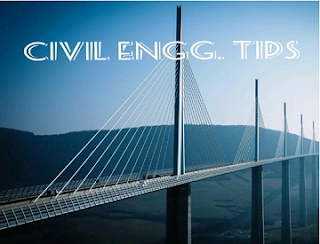There may be two cases, as outlined below,
Case I: When the area is oblong and cannot be controlled from a single station
In this method, the varied points on any contour are located on the bottom by taking Levels. Then these points are marked by pegs. After this, the points are plotted on the map, to any suitable scale, by plane table. This method is very slow and tedious. But it gives accurate contour lines.
Procedure
1. Suppose a contour map is to be prepared for an oblong area. A temporary bench-mark is set up near the site by taking fly-level readings from a permanent bench-mark.
2. The level is then set up at a suitable position L from where maximum area can be covered.
3. The plane table is set up at a suitable station P from where the above area can be plotted.
4. A backsight reading is taken on the TBM. Suppose the RL of the TBM is 249.500 m and that the BS reading is 2.250 m. Then the RL of HI is 251.750 m. If a contour of 250.000 m is required, the staff reading should be 1.750 m. If a contour of 249.000 m is required, the staff reading should be 2.750 m, and so on.
5. The staffman holds the staff at different points of the area by moving up and down, or left and right, until the staff reading is exactly 1.750. Then the points are marked by pegs. Suppose, these points are A, B, C, D
6. A suitable point p is selected on the sheet to represent the station P. Then. with the alidade touching p, rays are drawn to A, B, C and D. The distances PA, PB, PC and PD are measured and plotted to an appropriate scale. In this manner, the points a, b, c and d of the contour line of RL 250.000 m are obtained. These points are joined to obtain the contour of 250.000 m
7. Similarly, the points of the other contours are located.
8. When required, the levelling instrument and the plane table are shifted and set up in a new position in order to continue the operation along the oblong area.
Case II: When the area is small and can be controlled from a single station
In this case, the method of radial lines is adopted to obtain contour map. This is also very slow and tedious, but gives the actual contour lines.
1. The plane table is set up at a suitable station P from where the whole area can be commanded.
2. A point p is suitably selected on the sheet to represent the station P. Radial lines are then drawn in different directions.
3. A temporary bench-mark is established near the site. The level is set up at a suitable position L and a BS reading is taken on the TBM Let the HI in this setting be 153.250 m. So, to find the contour of 152.000 m RL, a staff reading of 1.250 m is required at a particular point, so that the RL of contour of that point comes to 152.000 m.
RL = HI - Staff reading = 153.250 – 1.250 = 152.000
4. The staffman holds the staff along the rays drawn from the plane table station in such a way that the staff reading on that point is exactly 1.250. In this manner, points A, B, C, D and E are located on the ground, where the staff readings are exactly 1250.
5. The distances PA, PB, PC, PD and PE are measured and plotted to any suitable scale. Thus the points a, b, c, d and e are obtained which are joined in order to obtain a contour of 152.000.
6. The other contours may be located in similar fashion












Thanks for sharing this post and visit my articles Jawline Contouring in Islamabad
ReplyDelete